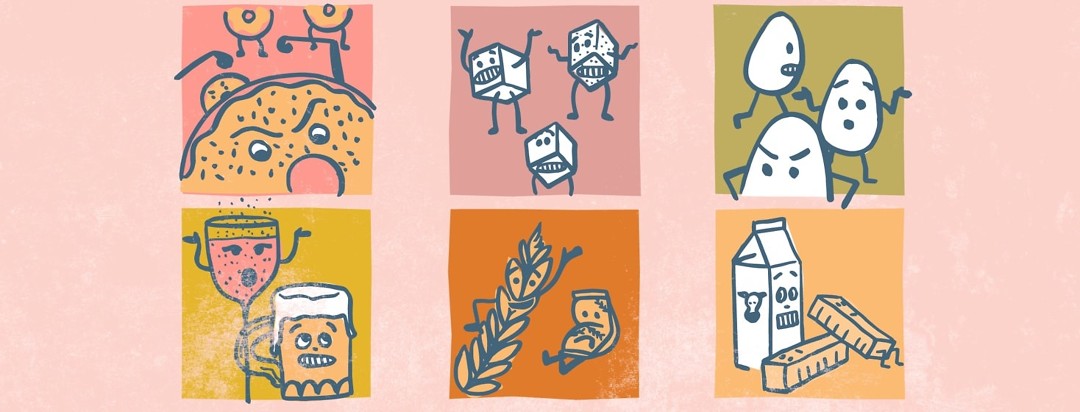Supporting Your Partner With Endometriosis Through Food: Foods We Avoid
When my partner is suffering from an endo flare-up, a basic thing I can do to support her is take over dinner duties. It’s a simple suggestion, but telling someone to put their feet up while you get busy in the kitchen can really help the person suffering from endo manage their pain and get some rest. But what if the foods we are preparing make the pain worse? And what if there were foods that could make the pain lessen and heal and invigorate your loved one? Well, perhaps there is. My partner and I strongly believe in the power of diet to manage and reduce endo symptoms, including inflammation (pain) and fatigue, so here are some of the food choices we make when she’s having an endo flare-up.
As a disclaimer, I am not a nutritionist, nor do I claim to have any particular expertise on the subject of how food affects endometriosis. The following tips and suggestions are based on observations and research my partner, and I have made and carried out ourselves, and they do really work for her. This, however, does not guarantee it will work for you. Try them out, and see how they make you or your partner feel. Only you will know if they help.
Another note – I’m going to start by listing things we try to avoid. Please don’t be disheartened by this! It may seem like I’m telling you to avoid everything, and it is a lot, but there are so many more ingredients out there to make delicious meals.
Sugar
Firstly, sugar seems to be a major trigger for my partner's pain levels, so I try to make something that is low in sugar (and carbohydrates, of which sugar is one). This means not cooking recipes that call for sugar, such as some curries or glazed foods, and definitely not baked goods or desserts. It also means we try to avoid very sugary vegetables (like root vegetables) and fruits.
Grains
Grains are another food waiting to raise those sugar levels and increase inflammation. This means we try to avoid eating rice and pasta on days when my partner's endo is painful. We replace this with pulses: pasta made from chickpeas or lentils is a great alternative, high in protein and lower in sugars. Obviously, rice pasta is a common pasta alternative, but remember, that’s still made from rice and is one of the grains we try to avoid at this time.
Dairy
Another known inflammatory food is dairy. We avoid cooking with butter, eggs, or milk. Often, you can replace eggs with flaxseeds, replace butter with vegetable oil, and milk with a variety of nut-based drinks. Although, be careful with nut milks because a lot of them are sweetened and contain rice to make them sweeter.
Gluten
Gluten – an ever touchy and confusing subject. Does it increase inflammation? Does it make you bloat? Is non-coeliac gluten intolerance a real modern phenomenon, or are we all just hypochondriac snowflakes? Well, I don’t know, and no one really does. But we do know that lots of people complain about digestive problems and pain relating to gluten and breads, and we also know that modern baking contains many funny chemicals that could cause a number of these symptoms1, so if something is this mysterious and potentially problematic, why not leave it out? Chickpea flour (gram flour) can make great pancakes and wraps, and buckwheat can be used for a more bread-y texture. Gluten-free products in shops always have a list of ingredients as long as my arm, most of which I’ve never heard of, so we just avoid them.
Alcohol
While not a food, alcohol is a common ingredient. It is also inflammatory and can increase pain levels. This means we try to avoid things like red wine gravy, or mirin in stir-fries, and other alcohol containing recipes. It’s not difficult to avoid this, but it’s also easy to overlook and include by accident.
So, these are a lot of the foods we try to avoid, to help my partner have a less painful period or endo-flare up. Stay tuned for the next article, in which I’ll talk about the foods we do eat.

Join the conversation